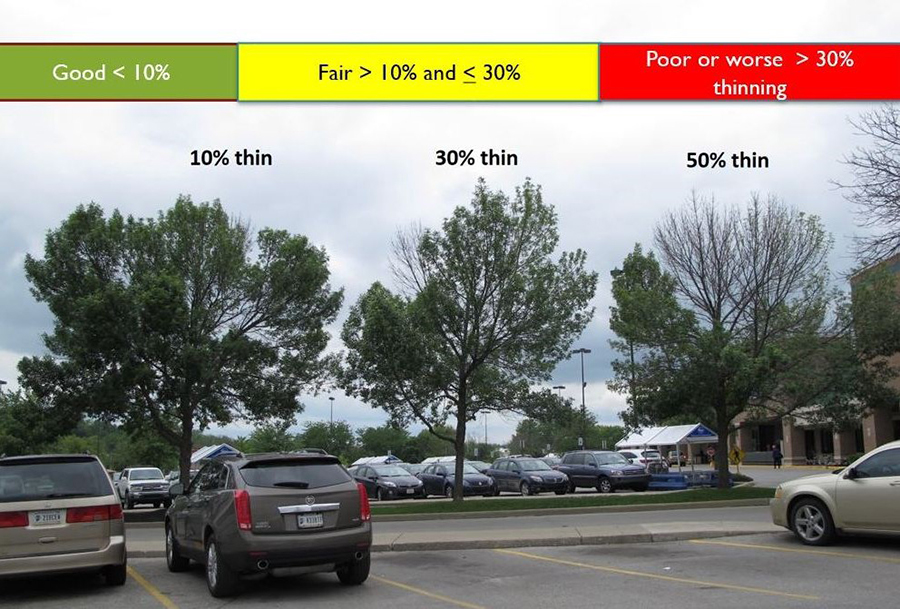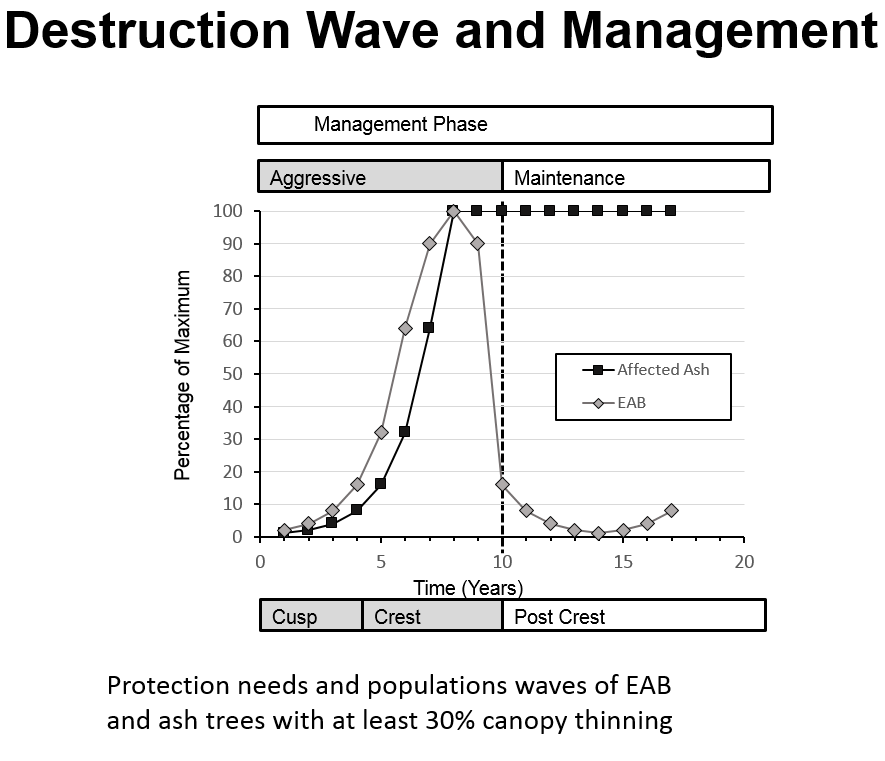Making Treatment Decisions
Emerald ash borer will kill all ash trees that are not protected with insecticide. Dead and dying ash trees can be dangerous when they fall on people and property- especially in urban areas. Simply ignoring the ash trees will pose great safety risks. Use the EAB decision making guide (pdf) to guide you through the decision making process.Save or remove?
Before you decide, consider:Tree health. Trees that have lost more than 30% of their canopy should not be saved with insecticides because too much of the tree is already dead.

Photo credit: Cliff Sadoff
Tree location. Remove trees that are likely to encounter obstacles as it grows (power lines, buildings, etc.). Save trees planted where they are likely to thrive and provide a service to the community.
Cost. Homeowners who protect large trees from EAB than will usually spend less money and have more shade than those who chose to remove them. Cities can also save money by protecting their trees and should use the EAB cost calculator to assess the cost of your treatment plan.
EAB and Pesticide Treatment
Insecticides can extend the life of healthy ash trees during an EAB infestation indefinitely. For detailed instructions on EAB pesticides, please see Insecticide Options for Protecting from EAB (pdf).How long do I have to treat my ash trees?

Graph credit: Cliff Sadoff
Please see our invasion wave page for more details.
Biological Control
Three species of small, stingless wasps are being used to control EAB throughout Indiana and the US. These wasps kill large percentages of EAB in their native range in Asia. All wasps have been thoroughly tested to ensure that they will not attack native insects. It is unlikely that these wasps alone will eradicate EAB, but they help protect ash trees growing from seedlings in the forest. Although more wasps are reared every year, they are only given to professionals for release to ensure that they have the best chance for success.Don't Move Firewood
Develop a local disposal plan when removing dead and dying ash tree. On its own, EAB can only move about half-a-mile per year but can spread across the country in a matter of days with human help.EAB isn't the only pest that hides in firewood: both native and invasive pests can hitch a ride inside loads of wood and some were spread even before they were identified as problems. Gypsy moths, Asian longhorned beetles, and chestnut blight are just a few of the invasive species that can hide inside firewood.
Buy or collect firewood at your destination, to protect the places you visit.